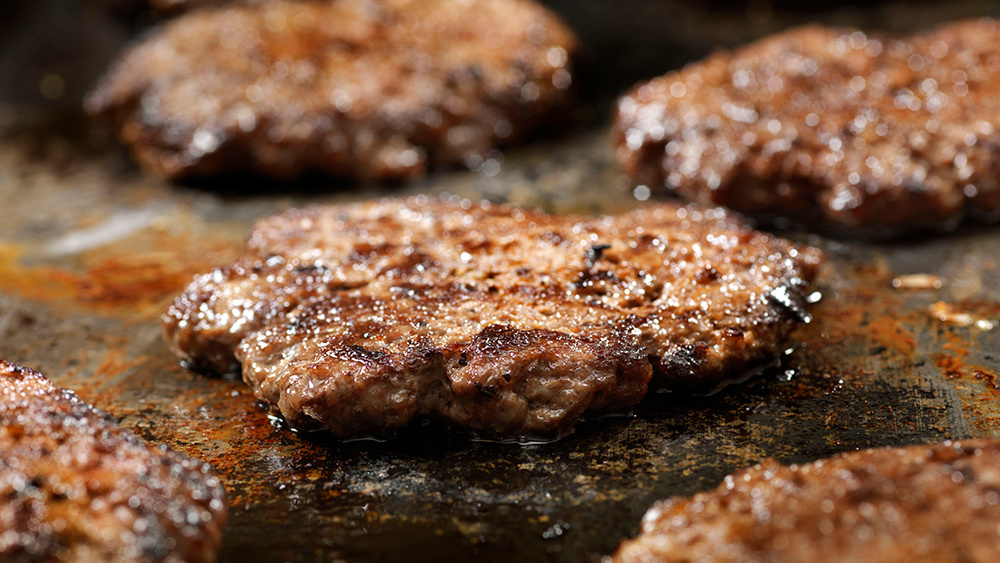Total Carbs Vs. Net Carbs

 Add to favorites
Add to favorites
We’re learning that carbs are not our friends. If you want to lose weight, or even maintain your weight, carbs are a concern.
Let’s face it: we’re all going to eat some carbs. Fruit contains carbohydrates. Even broccoli has carbs. The amount of carbs you should eat, however is seriously up for debate these days.
The general recommendation for grams of carbs allowed per day is 225 – 325 grams. I’ll argue that is seriously WRONG. You’ll get seriously fat that way. Most folks will, at least. Some people can seemingly eat anything.
Most of us are not those people.
There is the crowd that contends that it’s all about calories in/calories out and all you have to do is count calories. In my life I proved that WRONG, too. I ate less and less to keep my calorie count down. At 750 calories a day I was still gaining weight. 750 calories is considered a starvation diet, so why was I gaining? Because everything I ate turned out to be full of carbs. I ate a half a banana for breakfast with skim milk. I had a diet drink for lunch which was loaded with carbs. Then I ate a baked potato for dinner. VERY high carb. In terms of calories it didn’t add up to much, but it added up to a LOT of carbohydrate consumption. My body had an overload of carbs so it had no choice but to turn those extra carbs into fat. That’s how it works, folks.
Low-carb diet experts recommend eating between 20 and 100 grams of carbs per day. The amount you can handle depends on how large you are and your metabolism. Everyone has to find their “sweet spot” in terms of carb consumption. I don’t know many people who can eat more than 80 grams of carbs per day without starting to see weight gain.
I teach people to pay attention to carb count; not calorie count.
You need to know how many carbs you’re eating. Until we get used to it (as used to it as we did counting calories) I recommend you use a carb counting system like FitDay or My Fitness Pal. You can input everything you eat and drink and then look at the chart that will tell you how many grams of carbs/protein/fat (and alcohol) you’re eating. They give it to you in terms of grams and percentages. You also need to learn which foods are high carb so you don’t eat them. That involves getting to know the Glycemic Index (more on that some other day).
If you are eating a whole food diet protocol, (for the novices, that means you’re eating fresh food) you need to use an input calculator like the ones I recommended because veggies, fruits, meats and fish don’t come with labels that indicate how many carbs they contain. Only processed foods will list the carb count on the nutrition label.
Now, this is where it gets tricky and borderline sinister.
I recommend you limit the amount of foods you eat that come in a box, a can, or a jar. To get into those containers it means the foods inside are processed at some point and probably have artificial sweeteners and preservatives in them. Processed foods have made us fat, and the grocery stores are loaded with them. Look at all those aisles in the grocery store!
Okay, so you’re in the aisles and you want something in a box. You’ve learned to read the label but now you get confused. The box shows the amount of carbs, but then it has this other mysterious number called NET carbs. So what’s the difference?
Here’s a good definition and explanation by nutrition writer Bryn Bellamy:
“Net carbs are simply the grams of total carbohydrates in a portion of food minus its grams of fiber. Because fiber is a carbohydrate that your body cannot digest, it does not raise your blood sugar levels or trigger an insulin response. The presence of fiber in the digestive tract also slows the absorption of any other carbohydrates, mitigating blood sugar spikes and insulin release. For low-carb dieters, fiber carbs don’t really count as carbs. For example, a 1-cup serving of cooked broccoli provides 11.2 grams of total carbohydrate and 5.1 grams of fiber for a net carb contribution of 6.1 grams. Manufacturers of products marketed to low-carb dieters often do the math for you, proclaiming net carb counts on the package front or prominently on the nutrition label.”
So if you are trying to limit your carb consumption to, let’s say 50 grams of carbs per day, you can choose to count only 6.1 grams of carbs from that cup of broccoli or you can go with the original 11.2 grams.
Because we are in America, we like to stretch every rule to the limit, so we are likely to go with what works to our best advantage and log only 6.1 grams.
Not me. I log the gross amount because then every gram of fiber that would have taken that number down becomes bonus for me. I’m holding myself accountable at the higher number so if I slip up (intentionally or not) I am generally ahead of the game.
Now, here’s where I feel it borders on sinister:
The food manufacturers want you to feel you can get away with as much as possible so you won’t feel guilty eating their processed foods. So they are sure to put the net carb element listed on every product. You’ll find it right below the total carb listing. Really, there’s nothing wrong with it but if you’re trying to sell your whole wheat bread you are going to tout the fact that it’s high in fiber on your label. The unsuspecting will pick that up thinking they are doing their body a huge favor by taking the whole wheat bread instead of the white bread. We’ve been told to eat brown stuff instead of white stuff and we buy into that theory. But here’s really no significant difference between the fiber in wheat bread and the fiber in white bread.
Here are the numbers: The average serving of white flour in white bread has a glycemic load of 10. The same size serving of whole wheat flour in whole wheat bread is 9. White bread has 12 grams of carbs. Wheat bread has 11 grams of carbs. Big deal. (Can you hear my sarcasm?)
This isn’t even an appreciable amount. Whole wheat bread is still bread. Bread = sugar. Your liver will tell you that. By the time that whole wheat bread shows up at your liver in the digestive process it’s all just levels of sugar.
Cheers,

Nothing found.
Smash Burgers
ZS-5 Ingredients or Less,ZReboot,Featured Posts,ZSpecialties,Recipes
Smash burgers are all the rage. Step into a brew pub and you’ll likely find a smash burger on the food menu. These are NOT the huge, 8oz burgers we’ve been fed in the past. These are a thinner burger…
Nothing found.
Who Invented St. Patrick’s Day?
I always knew I was of Irish descent, but I never really knew HOW Irish I was until I got my 23 n Me results back.
Kitchen Hacks for Enjoying Lower Carb Pasta Meals
Enjoy your pasta; just don’t do it too often. Follow hints like this and you’re much less likely to gain weight.





